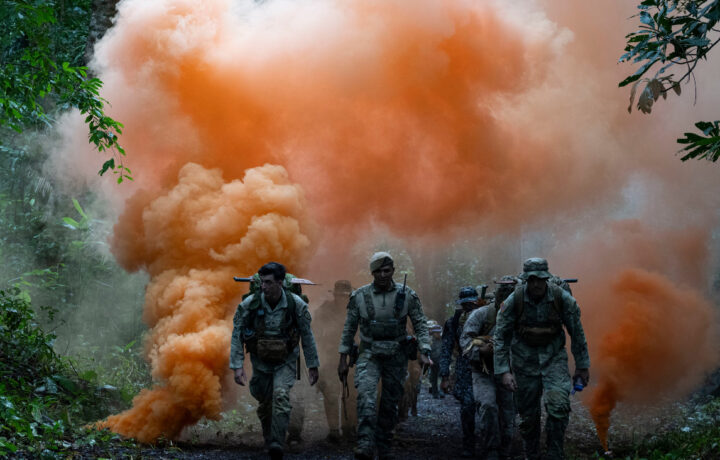For the first time in more than two decades, United States military personnel began training in the Panamanian jungle, but it is reportedly unrelated to the buildup of American forces in the Caribbean. In October, members of the United States Army and United States Marine Corps took part in a three-week-long Combined Jungle Operations Training Course at Base Aeronaval Cristóbal Colón, formerly known as Fort Sherman.
The U.S. military personnel worked alongside Panamanian security forces, learning jungle survival techniques that included foraging for food and navigating dense tropical forest terrain.
Welcome to the Jungle
According to the United States Southern Command (USSOUTHCOM), the roots of the school date back more than a century to 1916, just two years after the Panama Canal was opened. The training expanded during the Second World War, as U.S. forces prepared for fighting in the jungles of the South Pacific. In the 1950s, the United States Department of Defense (DoD) formally established the Jungle Operations Training Center at Fort Sherman.
Since that time, the area around Aeronaval Base Cristóbal Colón has been used to prepare both U.S. and Panamanian service members for operations in jungle environments. Thousands of U.S. and Latin American military personnel took part in the training annually. During the Vietnam War, Fort Sherman became the primary location for jungle survival skills training, in part because the site’s conditions have been described as the harshest in the world. It is noted for multiple layers of thick, towering vegetation that impact communications gear and night-vision equipment. It is home to venomous snakes and other jungle creatures.
“The legacy of the original Jungle Operations Training Course now reemerges through CJOTC — a joint effort to strengthen ties and build capability for all involved, supported by the Joint Security Cooperation Group–Panama.”
The training in the Latin American country ended after the Panama Canal Zone was transferred back to Panama, and soon after, the Pentagon shifted its focus away from jungle warfare.
Initially, it was due to budget cuts, and then with the Global War on Terror (GWoT), extensive jungle training became less of a focus. A limited amount of jungle training continued to be carried out on a smaller scale at other sites, notably the U.S. Army’s jungle training center in Hawaii and a Marine Corps site in Okinawa, Japan, ABC News reported.
The Green Hell is Back
Training in Panama had previously been dubbed the “Green Hell” and was noted for its similarities to the conditions the U.S. forces faced in Vietnam. The training, which comprises three phases, follows the implementation of new security agreements between the United States and Panama.
U.S. officials have acknowledged it will start small in scale, but will increase over the next year as the need arises.
A lot still depends on whether the Pentagon continues to be involved in operations in the region, even if it isn’t directly intended to prepare troops for any missions in Venezuela or other parts of Latin America.
“If you can train and fight in one of the most difficult and challenging locations in the world, you build a really lethal, effective force,” one defense official told ABC News earlier this week.
“This course stands out because it is a truly multinational, cooperative effort involving the United States and all three Panamanian security institutions,” explained Capt. Lauryn Westman, the officer in charge of the course. “[It] fosters real-time interoperability, survival techniques, and shared tactics.”
USSOUTHCOM has also suggested this course will help bring about unity between the U.S. and Panama and forge a “partnership between people.” Given the harsh conditions, coordination is crucial.
That includes everything from developing the plans to executing tasks, where building cooperation from the ground up is paramount to success. That extends to every one of the personnel, including the instructors. As the program expands, with each iteration, new lessons will be learned, improved techniques will emerge, and even stronger ties will form between the service members participating.
It will further blend the Panamanian experience in the terrain with the U.S. military’s expertise in training and sustainment. That will further strengthen the interoperability and trust that is essential to regional security.
“Our unity fosters adaptability, innovation, and mutual understanding,” said Westman. “Ultimately, while interoperability is inherently challenging, it remains our greatest strength and the foundation of the course’s success.”




